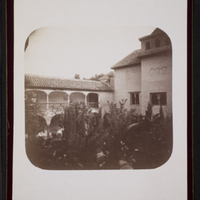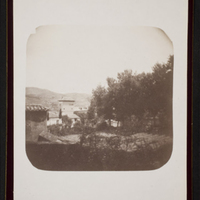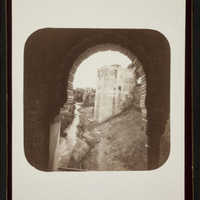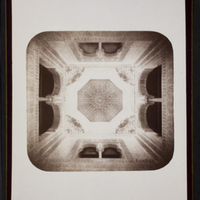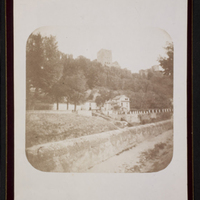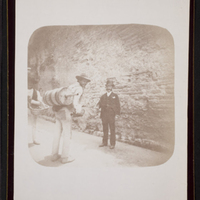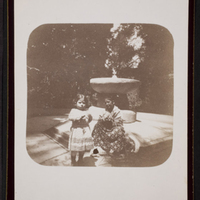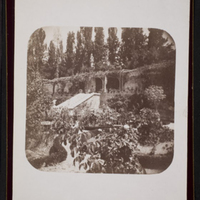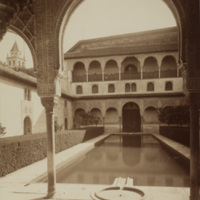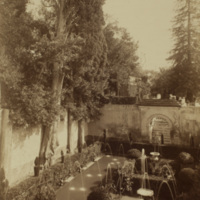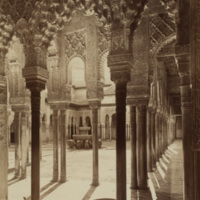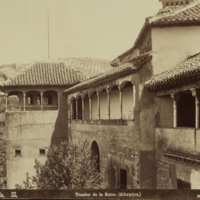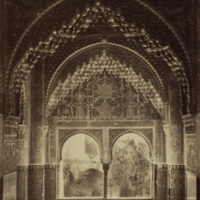The Alhambra

Emily and James Sibley Watson at the entrance to the mosque in the Alhambra, Granada, Spain, June 2, 1891
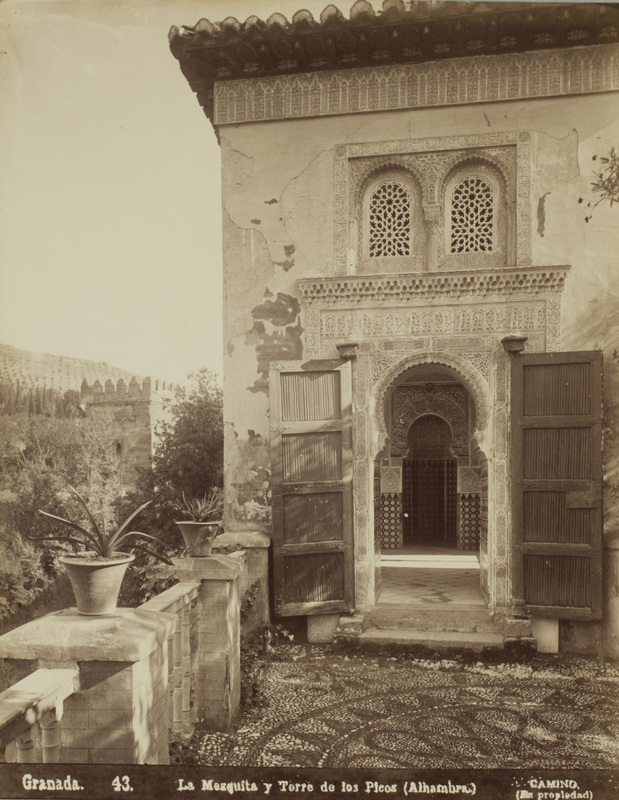
Mosque and Tower of the Points, Alhambra
The Alhambra, a palace and fortress complex above Granada, dates largely from the 13th-15th century, although some portions are built upon Roman ruins. It represents the high point of Islamic architecture in Spain, created during the centuries-long Reconquista, or takeover of the Iberian peninsula by Catholic Spain, that ended with the surrender of Granada in 1492. The palaces include numerous gardens with pools and fountains, fed by a system of conduits and water tanks.
In the 19th century, entrance to the Alhambra would have been through the twisting Puerta de la Justicia, or Gate of Justice, through the Puerta del Vino (Wine Gate) and then into the fortress and palace gardens, most notably those of the Palacio de Generalife (Architect’s Garden).

